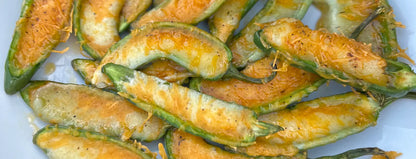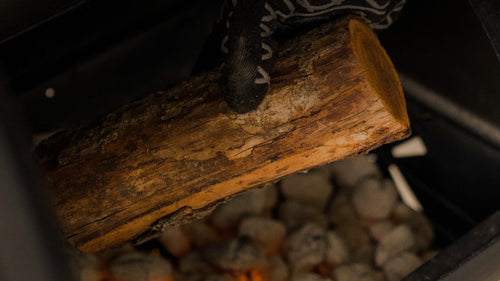Guest Blog From John McLain (@grillin_in_the_atx)
Wood as an ingredient: Regardless of what kind of grill and/or smoker you use; be it an off-set smoker, barrel smoker, kettle smoker, Kamado style or something else, the grills are not an ingredient.
Many people think of wood as a fuel and while it does serve that purpose, it is also an essential ingredient when grilling and especially smoking.
How many other cuisines are there where the heat source is a vital part of the dish flavor?
As important as salt or pepper, the right wood and/or charcoal helps define the flavor profile of your food. So whether you’re grilling or smoking vegetables, fish, beef, pork, fowl or cheese, the right wood choice is critical.
We can all go to our local grocery store, bbq outfitter or even order wood and charcoal online. In today’s world, we can get any kind of wood from anywhere in the world. As little as 50 years ago, this was not the case. Wood options were fairly restricted to regions and people used what was available. In central Texas, where I am from, post oak is abundant and therefore very commonly used. In west Texas it’s mesquite. In the south, hickory is common.
If you’d like to learn all about the properties of wood, read Harold McGee’s “Indispensable On Food And Cooking” to learn all about the organic compounds that make up all wood and how they contribute to both heat and smoke.
Here’s a small description of the kinds of wood and their typical uses:
Post Oak
There are over 600 species of oak. I believe that post oak (a relatively small oak) is the most common in grilling and especially smoking. Oak is one of the more mild woods and burns great, not too fast and not too slow. It can also be controlled pretty easily and has a mellow and smoky flavor. In Texas, where beef is king, post oak is a very common wood used in smoking and grilling. It really allows the flavor of the meat come through. My father-in-law who grew up in the deep south had never used anything other than hickory. When I made him a Texas style brisket with post oak, he was in love.
Hickory
A bit more powerful than oak and burns long and clean. Unlike oak, it’s stronger and smokier with a bit of sweetness. Goes well with beef and pork as well as chicken. It’s personally my go to wood for all things pork. I think it mixes well with fruit woods as well for some complex flavors.
Pecan
This wood is in the hickory family. It doesn’t burn as hot as oak but has a nice sweet flavor. It also doesn’t burn long, so it’s great for shorter cooks or as an added wood to a long cook. Oak and pecan together are fun for long cooks as the pecan gives meat an added flavor but doesn’t need to be the primary fuel. There’s a steakhouse here in Austin that uses it exclusively and they are famous for it. First time I had a steak grilled directly on pecan, it was fantastic. I thought it added a very unique flavor.
Fruit Woods
I remember the first time I used cherry wood to smoke some baby back ribs, the smell was heavenly! My neighbor was peeking over the fence asking what smelled so good. No denying it. It was fantastic. Fruit wood smoke flavor is subtle and well rounded and works really well with chicken, fish and pork. Fruit woods typically work better when they are a bit greener, so keep that in mind as you cook. For pork, hickory and cherry or apple woods combined make for a fantastic flavor profile. Hickory with a bit of cherry are my absolute go to woods for pork butt.
Mesquite
When I lived in west Texas, we used Mesquite for everything. It’s a fairly strong flavored wood and burns hot and fast. Great for direct grilling. It’s very popular in the Tex-Mex world and especially for fajitas. You can go into any Tex-Mex restaurant in Texas and you’ll immediately smell the burning mesquite. I personally am a big fan, as I grew up using this wood, but it doesn’t do particularly well by itself for long cooks such as brisket and pork butt. It’s also fairly strong, so I use is sparingly as it can become almost overpowering.
Cedar
I think we commonly use cedar wood as a plank and not as a fuel or smoke source. Nonetheless, it adds a great flavor when fish and vegetables are cooked directly on a well saturated piece of cedar. I mean, who doesn’t love cedar planked Salmon!
So there you have it, whether wood is your primary fuel or you add it to charcoal for smoke and flavor, picking the right wood based on the flavor profile you are going for is essential. Be creative with it. Most heavy meats (beef and pork particularly) are forgiving so try different combinations of woods to create some very interesting flavor profiles. When you’re grilling and smoking, you want to taste the food first, not the smoke.
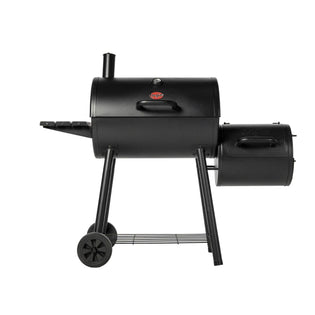
 Flat Iron® Portable 17-inch Gas Griddle
Flat Iron® Portable 17-inch Gas Griddle
 Flat Iron® Premium Gas Griddle
Flat Iron® Premium Gas Griddle
 Flat Iron® Gas Griddle with Lid
Flat Iron® Gas Griddle with Lid
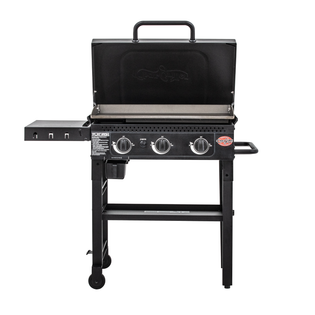
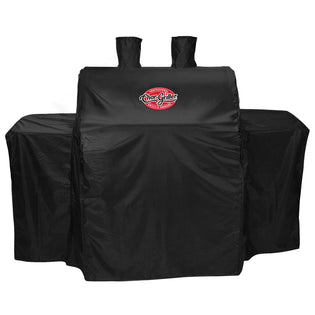
 Sauced and No Sauce Spare Ribs
Sauced and No Sauce Spare Ribs
 Pulled Pork n' Bacon Cheesy Sliders
Pulled Pork n' Bacon Cheesy Sliders
 Smoked Pulled Leg of Lamb
Smoked Pulled Leg of Lamb
